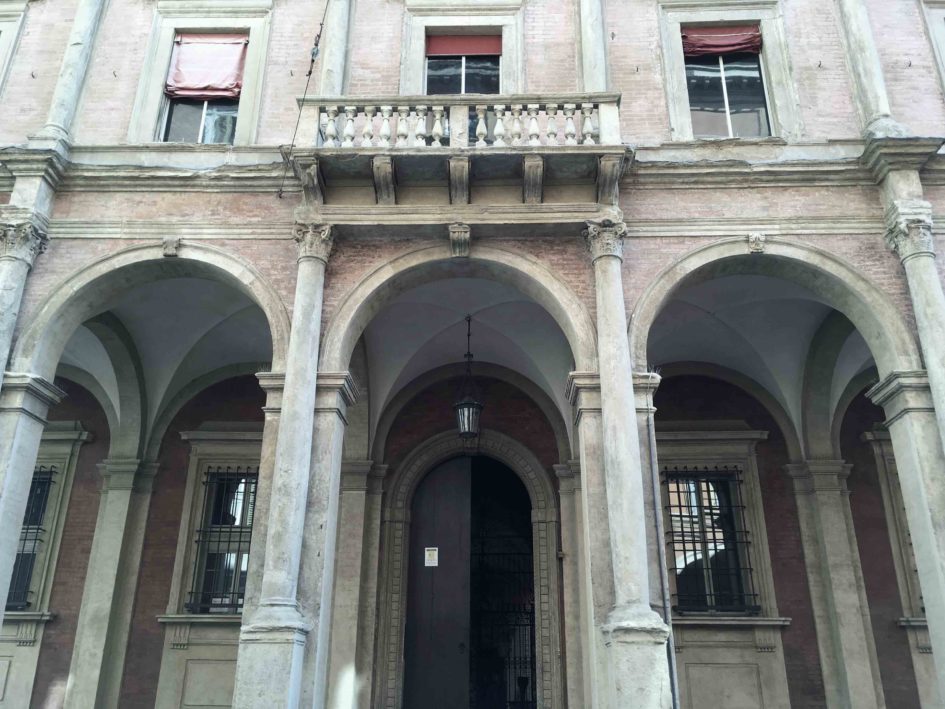 For almost a thousand years Bologna’s porticoes have been one of the city’s most distinctive features. But as well as being architecturally important, they still serve an important practical purpose; with almost 40-kilometres of covered walkways remaining in Bologna, residents here move about the historic centre almost completely sheltered from sun or rain.
For almost a thousand years Bologna’s porticoes have been one of the city’s most distinctive features. But as well as being architecturally important, they still serve an important practical purpose; with almost 40-kilometres of covered walkways remaining in Bologna, residents here move about the historic centre almost completely sheltered from sun or rain.
The late 12th century was a period of extraordinary development in Bologna as students from throughout Europe flocked to the city’s prestigious university. The solution to housing this exploding population was to build dwellings above the existing shops and workshops; the students lived in the rooms upstairs while the city’s artizans continued working below. Eventually, in an effort to gain more space, the dwellings began to overhang the workshops and had to be propped up by timber supports. Bologna’s porticoes had arrived.
 Later, as other European cities were deciding that porticoes intruded too much on public space and began tearing them down, Bologna was enshrining its porticoes into law. A 1288 statue decreed that all new houses should have a portico, the minimum height of which was to be 7 feet (that is, high enough to allow the passage of horse and rider).
Later, as other European cities were deciding that porticoes intruded too much on public space and began tearing them down, Bologna was enshrining its porticoes into law. A 1288 statue decreed that all new houses should have a portico, the minimum height of which was to be 7 feet (that is, high enough to allow the passage of horse and rider).
The architectural legacy delivered by that law is evident in the different styles of porticoes that still exist today; from simple wooden structures that served as workshops for artizans and craftspeople, to elaborate Gothic and Renaissance porticoes designed by master architects for the city’s elite.
 The world’s longest portico is also to be found in Bologna. At almost 4-kilometres, the portico leading up to the Sanctuary of the Madonna di San Luca is made up of 666 arches (yes, much has been made of this being the so-called ‘devil’s number’). The first half of the San Luca portico is relatively flat, but then the path turns left and heads up the hill and the last 300-metres or so is a steep climb.
The world’s longest portico is also to be found in Bologna. At almost 4-kilometres, the portico leading up to the Sanctuary of the Madonna di San Luca is made up of 666 arches (yes, much has been made of this being the so-called ‘devil’s number’). The first half of the San Luca portico is relatively flat, but then the path turns left and heads up the hill and the last 300-metres or so is a steep climb.
On any day you’ll find dozens of runners using the steps of San Luca to get their heart rate up. But you’ll also find many people making the pilgrimage to the Sanctuary of the Madonna as generations of others have done before them.
The porticoes of Bologna are an important part of the lives of the people of the city today, just as they have been for centuries.

Leave a Reply